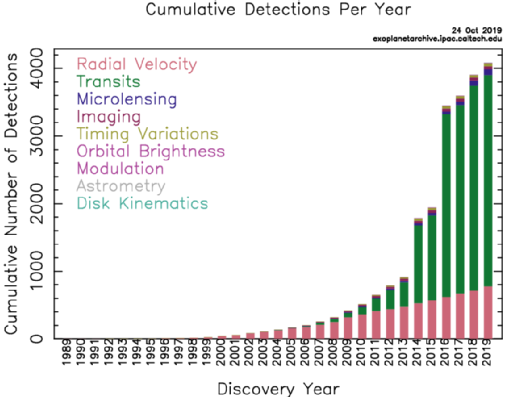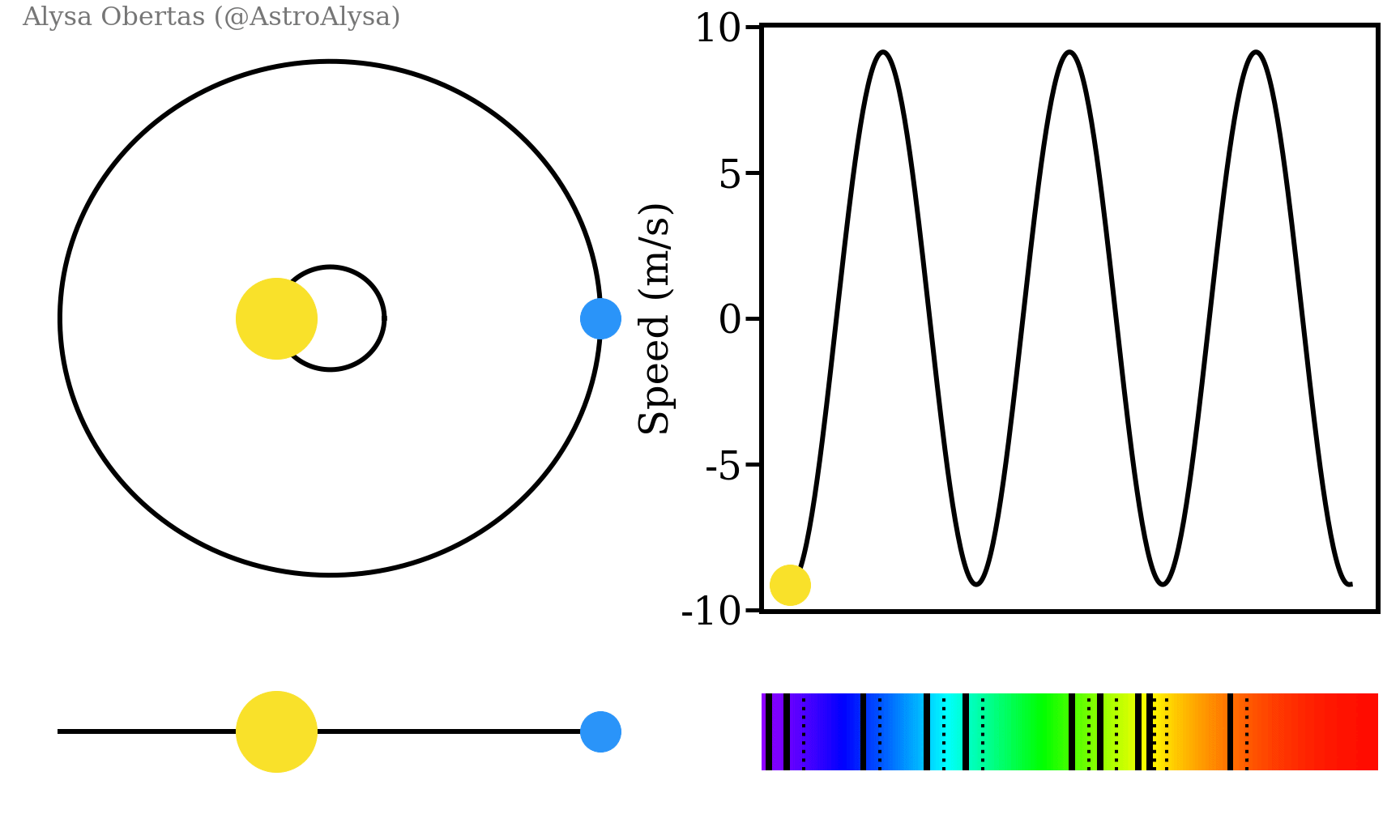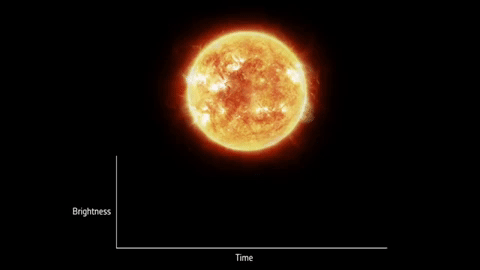Winks and Wobbles Workshop
Resources
Here are links to the various tools used in the workshop:
- Centre-of-mass demonstration
- Doppler effect video
- Radial velocity simulator
- Transit simulator
- Transit light curve spreadsheet
Here are links to download the resources used to run the workshop.
- Slides used in the full workshop
- Slides used in the Winks-only workshop
- Winks and Wobbles worksheet
- Winks worksheet
Want to know more?
Exoplanets
Scientific database of all known exoplanets
ESA webpage on detecting exoplanets
Wikipedia article about methods for detecting exoplanets
Radial velocity method
Introduction to radial velocities by the Planetary Society
Transit method
An introduction to transit light curves
Planet Hunters - search for exoplanets in real data from NASA's TESS satellite
Agent Exoplanet - exercise to explore how transit light curves are generated from astronomical images
Transits in the Solar system
From Earth, both Mercury and Venus can sometimes be seen to transit the Sun. On November 11th 2019 there is a transit of Mercury. More information here (space.com) or here (NASA).
Solar eclipses are just a special type of transit, in this case of the Moon passing in front of the Sun.
Here we give a rough outline of the contents of the workshop.
What is an exoplanet?
Exoplanets (sometimes referred to as extra-Solar planets) are planets around other stars.
So far we've only found them around stars in the Milky Way, the Galaxy that the Solar System is part of, but we have no reason to think they don't exist in other galaxies.
How do we find exoplanets?
There are many, many different ways you can discover an exoplanet. But there are two methods that have been particularly successful.
- Transits ('Winks')
- Radial velocity ('Wobbles')

Wobbles - the radial velocity method
This method is based on two main Physics concepts:
- Centre-of-mass
- Doppler effect
Centre-of-mass
Just as a star’s gravitational pull causes a planet to move in its orbit, the gravitational pull of the planet on the star causes the star to move by a much smaller amount. To see how this works in the Solar System, have a look at this interactive demonstration.
Both the Sun and the planets are really orbiting the "centre-of-mass" of the Solar system. The same is true for other stars and planets.
Doppler effect
When you hear a siren, does the sound it makes change as it goes past you?
https://www.youtube.com/watch?v=imoxDcn2Sgo
That change in sound is the Doppler effect in action. When the fire engine is moving towards you, the frequency of the sound waves is higher, and when it's moving away the frequency is lower. This causes the change in pitch of the siren.
The same thing happens with light.
Radial velocities
The centre-of-mass demonstration used a viewpoint looking down on the Solar System. Imagine instead that you're looking at it sideways on, so that as the Sun orbits the centre-of-mass it is sometimes coming towards you, and sometimes moving away from you. When it's moving towards you the frequency of the light is higher, so the wavelength is shorter, and the light appears more blue. When it's moving away the frequency is lower, so the wavelength is longer, and the light appears more red.
As the planets and the Sun orbit the centre-of-mass, this change in frequency / wavelength happens regularly and in a measurable way.
By observing stars and looking for these changing wavelengths, astronomers can find stars that are 'wobbling', indicating that there are planets around them. Measuring the changing wavelength of light from the star allows use to work out the speed that the star is moving along our line-of-sight. The speed at which the star moves depends on the mass of the star, the mass of the planet, and the time it takes for the planet to orbit the star.
If we measure the speed of the star many times, we can build what's called a 'radial velocity curve' (see the top right of this gif).

Explore
Use this radial velocity simulator to explore how radial velocity curves change when you change:
- The mass of the planet
- The mass of the star
- The distance between the star and the planet ('semi-major axis')
- How non-circular the orbit is ('eccentricity')
Start with Preset Option A, and see what happens to the curve in the top right of the simulator.
You could also try different presets and see how they change things.
What can we learn from radial velocity curves?
The shape of the curve tells us how non-circular ('eccentric') the orbit is.
The height ('amplitude') of the curve tells us about the relative mass of the planet and star.
The period of the curve tells us the orbital period of the planet.
Winks - the transit method
This method is based purely on geometry!
When we observe a star, we measure its brightness. If something passes between us and that the star, the star temporarily appears fainter (and may even disappear). If the dimming events happen regularly, and are roughly the same each time, then that suggests there's something orbiting the star. Measuring the amount the star gets dimmer tells us about the relative sizes of the star and object blocking out the light, indicating whether it's a planet or something else.
If we measure the brightness of the star many times, we can build what's called a 'light curve' of the transit (see this gif).

Explore
Use this transit simulator to explore how transit light curves change when you change:
- The radius of the planet
- The mass of the planet
- The radius of the star
- The distance between the star and the planet ('semi-major axis')
- How non-circular the orbit is ('eccentricity')
- The tilt of the orbit ('inclination')
Start with Preset Option A, and see what happens to the curve in the top right of the simulator.
You could also try different presets and see how they change things.
What can we learn from exoplanet transits?
The depth of the transit tells us the relative sizes of the planet and star.
The shape of the transit tells us about the angle of the orbit.
The duration of the transit takes tells us about the relative sizes of the planet and star, and about the angle of the orbit.
The time between transits tells us about the orbital period of the planet
Exploring exoplanet transits
To finish the workshop, we're going to look at some data!
Download this spreadsheet. It has multiple tabs, each of which contains data to create a different light curve.
Create graphs from each set of data, and try to work out which transits were created by planets, what size those planets are, and which ones aren't transits at all.
Alternative explanations?
Planets aren't the only objects that can cause stars to get fainter. Sometimes astronomers will instead see:
- Stars getting dimmer because of clouds in Earth's atmosphere
- Transits caused by stars orbiting each other (rather than a planet orbiting a star)
There are also other things that can cause the brightness of a star to change, like stellar flares. Some stars also naturally vary in brightness.
